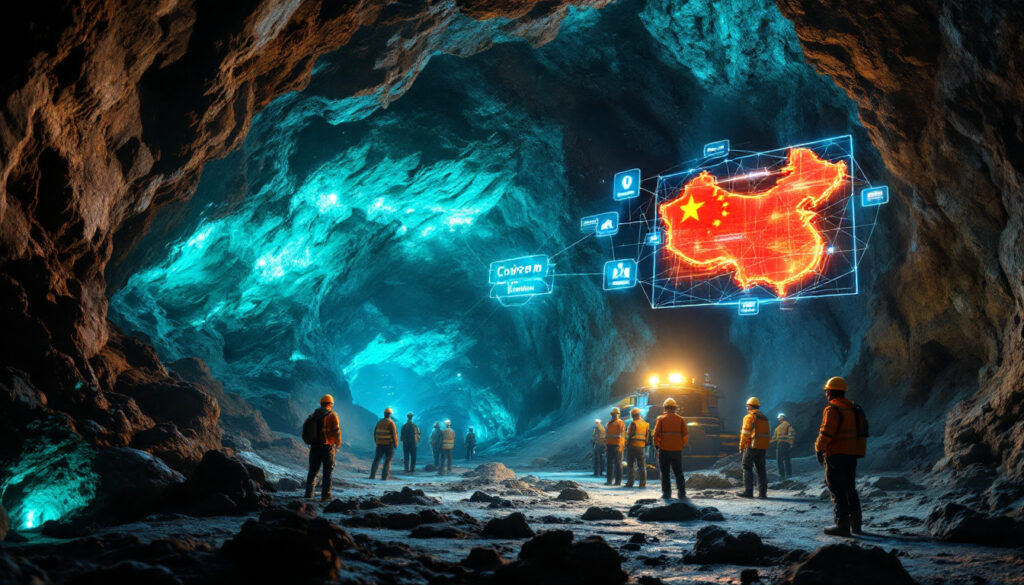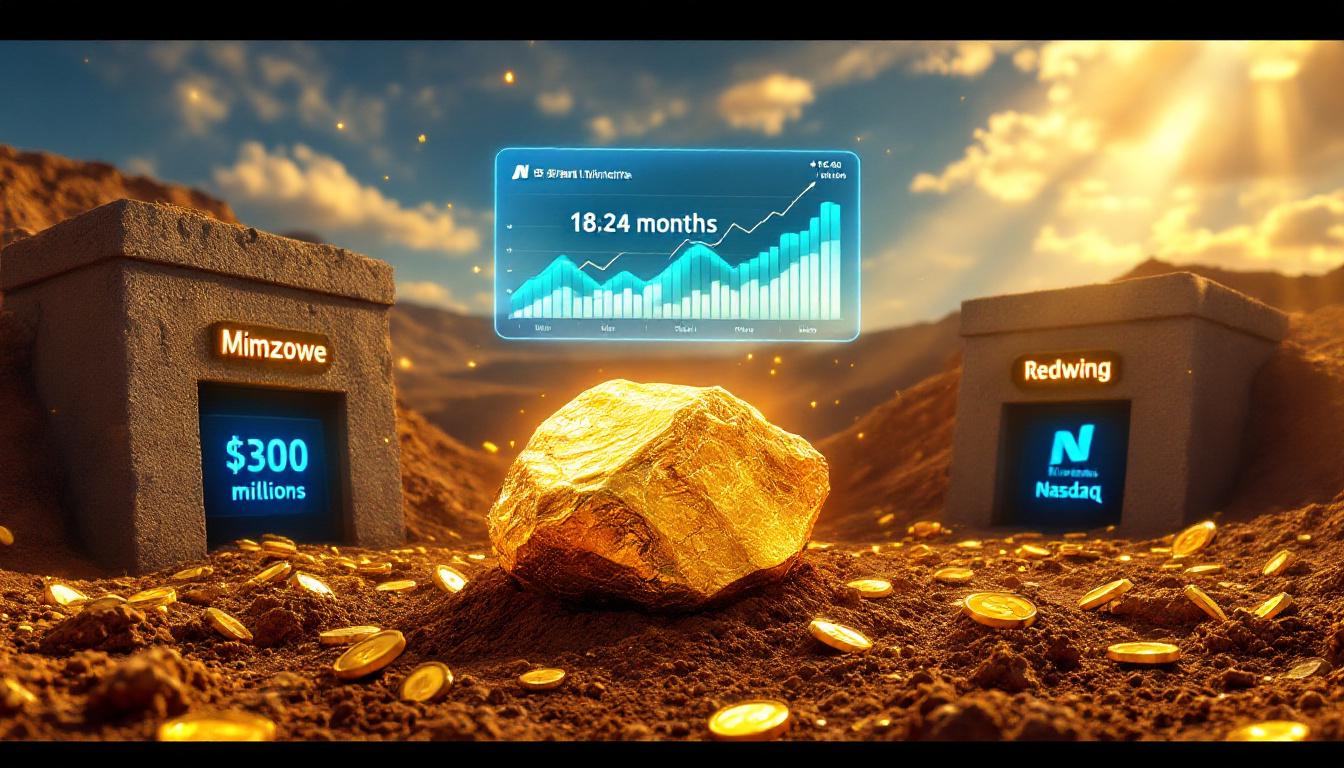Why Are Governments Being Called to Intervene in the Mining Sector?
The mining industry stands at a critical crossroads. Despite metals and minerals becoming strategic priorities for Western nations concerned about future supplies, the financing and development of new mines faces unprecedented challenges. This disconnect has led even the staunchest free-market advocates within the industry to call for government intervention to secure mineral supply chains.
The Strategic Importance of Mining and Current Market Paradox
Critical minerals form the backbone of modern economies, national defense systems, and the clean energy transition. Yet despite this strategic importance, the market dynamics for these resources remain paradoxical: demand projections soar while current price environments and investment flows fail to support necessary development.
The Warning from Private Capital's Leader
Oskar Lewnowski, founder of Orion Resource Partners with $8 billion in assets under management, has sounded an alarm that few expected from private capital's most prominent mining investor. As the largest specialist investor in metals and mining, focused on private equity and private credit, Lewnowski's perspective carries significant weight.
"We're heading toward a crisis in metals supply that could rival the 1970s oil shocks," Lewnowski warns. "The disconnect between strategic importance and market incentives is creating a dangerous vulnerability."
Despite his position as private capital's leader, Lewnowski believes mining's king of private capital says governments must intervene to address looming supply challenges – a remarkable stance for someone who has built his career on free-market principles.
The Market Paradox Explained
The market dynamics create a puzzling contradiction. Critical minerals like copper, nickel, lithium, and rare earth elements are universally recognized as strategically essential for defense systems, infrastructure projects, and the clean energy transition. Yet prices for key metals including nickel and lithium remain under significant pressure.
This price environment stems largely from Chinese investment creating waves of new supply, particularly in nickel from Indonesia, where production has increased dramatically over the past five years. Meanwhile, Western financing for mining projects has declined precipitously as European banks retreat from the sector due to ESG concerns and perceived risks.
"You can't finance the transition without these minerals, but you can't finance these minerals in the current market environment," notes Lewnowski, highlighting the fundamental contradiction facing the industry.
How China Dominates the Global Minerals Supply Chain
While Western nations debate mining policies, China's resource strategy has methodically established unprecedented control over the global minerals supply chain, creating national security concerns that extend beyond economic considerations.
China's Mineral Processing Dominance
China's strategic approach to minerals has resulted in control of more than 50% of global copper, zinc, and aluminum processing capacity. For specialized metals critical to advanced technology, the dominance is even more pronounced:
- 80% of global cobalt processing capacity
- 60% of lithium refining capability
- 85% of rare earths processing
This dominance didn't happen by accident. China regularly purchases thousands of tons of metals for state reserves, effectively supporting prices and producers. The country has systematically built mineral dominance over a 10-year period through state-backed investments, subsidies, and strategic acquisitions of overseas assets.
Chinese Investment Impact on Global Mining
Chinese producers have "driven up supply to a point where prices have collapsed" in certain markets, most notably nickel, creating what industry insiders describe as "brutal" market conditions for Western mining companies operating without state support.
The case of Horizonte Minerals' nickel project in Brazil illustrates this dynamic. The project collapsed partly due to Chinese competition flooding the market with Indonesian nickel, despite hundreds of millions in investment from Western capital providers including Orion.
Chinese mining companies now account for a growing share of total global mining investment, with particular focus on battery metals and rare earths. This shift in investment patterns has significant implications for supply security in Western nations, especially as geopolitical tensions increase.
The Case for Government Intervention in Mineral Security
Drawing parallels to energy security measures implemented after the 1970s oil crisis, Lewnowski and other industry leaders argue that governments must take specific actions to ensure mineral security.
Strategic Mineral Stockpiles
"When the oil embargoes started happening and prices started to spike in fossil fuels, the US created a strategic petroleum reserve. Something like that will need to happen for critical minerals," Lewnowski states. He advocates for government-owned strategic mineral stockpiles to buffer against supply disruptions and price volatility.
The United States historically stockpiled critical defense metals after World War II but sold most holdings after the Cold War ended, assuming global markets would provide reliable access. This approach now appears dangerously outdated as supply chains concentrate in geopolitical competitors' territories.
China currently operates the world's most active government critical minerals support program for metals, regularly buying copper, aluminum, and other metals during price downturns – a strategy that both supports domestic producers and enhances national security.
Government Ownership of Processing Infrastructure
Trafigura Group CEO Richard Holtum argues Western governments should take ownership stakes in struggling smelting and refining assets. "Smelting capacity is a national security issue, and therefore needs to probably have some sort of government ownership," he notes.
Western processing facilities struggle to compete with Chinese operations on a cost basis due to higher energy costs, stricter environmental regulations, and lack of scale economies. Without government support, domestic processing capability for strategic minerals continues to erode, increasing dependency on Chinese processing capacity.
This dependency creates vulnerability not just for raw materials but for the refined products essential to manufacturing defense systems, electric vehicles, and renewable energy technologies.
The Investment Challenges in Mining Development
The mining sector faces monumental challenges in attracting sufficient investment capital to meet future demand projections, particularly for critical minerals essential to the energy transition.
The Financing Gap
The International Energy Agency forecasts a need for more than $300 billion in copper mine investment alone by 2040 to meet projected demand. Similar investment requirements exist across the mineral spectrum, from lithium and nickel to rare earths and tin.
Traditional sources of mining capital have notably declined:
- European banks have largely retreated from financing mining projects
- Public equity investors have soured on miners after years of disappointing returns
- ESG concerns have made generalist investors increasingly wary of the sector
Private capital increasingly fills the gap but cannot meet total investment needs. Orion has partnered with sovereign wealth funds, including a $1.2 billion partnership with Abu Dhabi's ADQ, to expand investment capacity, but even these partnerships provide only a fraction of required capital.
Price Incentives and Investment Reality
Lewnowski notes that copper prices need to rise to $13,000-$14,000 per ton (from current ~$9,700) to incentivize sufficient investment in new production. "You need that price to incentivize certain kinds of new production. But until you have that price, you can't invest on the basis of a hypothetical," he explains.
Similar price incentive challenges exist for tin, uranium, lithium, and cobalt – all critical to the energy transition. Without higher sustained prices, capital allocation remains constrained as investors cannot justify development costs for marginal deposits.
Despite these challenges, Orion's internal rate of return on mine finance funds averages 16.1% before fees since inception – demonstrating that mining investment strategies can deliver attractive returns when properly structured. However, these returns come with substantial risk and volatility.
Case Studies: The Risks and Rewards of Mining Investment
Examining Orion's investment history provides insight into both the potential rewards and significant risks in mining finance, illustrating why government support may be necessary to complement private capital.
The Horizonte Minerals Failure
Orion invested approximately $150 million in Horizonte Minerals' nickel project in Brazil – a venture that appeared well-timed to capitalize on nickel demand for EV batteries. The project represented a textbook example of strategic investment in critical minerals for the energy transition.
However, construction costs nearly doubled from original forecasts due to inflationary pressures and technical challenges. Simultaneously, Chinese investment in Indonesian nickel created a significant supply glut, collapsing prices and undermining the project's economic viability.
Horizonte ultimately entered administration after spending hundreds of millions on an incomplete project, demonstrating how even sophisticated investors with deep technical expertise can incur substantial losses in mining investment guide development.
The Chilean Copper Success Story
In contrast, Orion's 2015 purchase of two Chilean copper mines from Anglo American for $300 million illustrates the potential upside. Orion converted aging oxide deposits to mine for sulphides, effectively building a new mine with established infrastructure.
The firm subsequently:
- Sold a silver stream on the mines as part of an $835 million deal with Osisko Gold Royalties in 2017
- Took the assets public through a merger with Capstone Mining in 2022
- Realized nearly $700 million by selling shares, with their remaining stake worth approximately $470 million
This total return represents multiple times the original investment and showcases how mining investments can generate exceptional returns when strategic assets align with effective operational execution and favorable market timing.
What Does the Future Hold for Critical Minerals?
Despite current price pressures, industry experts predict significant supply challenges ahead for metals essential to the energy transition and technology sectors, creating both risks and opportunities.
Forecast Supply Challenges
Lewnowski predicts future "challenges" for copper, tin, uranium, lithium, and cobalt – all metals critical to clean energy technologies. Copper prices, currently around $9,700 per ton, are forecast to potentially reach unprecedented $13,000-$14,000 per ton as structural deficits emerge.
Building new mines becomes increasingly difficult due to multiple factors:
- Best deposits already exploited, forcing development of lower-grade resources
- Rising construction costs making marginal projects uneconomic
- Permitting challenges extending development timelines
- Environmental concerns constraining project design and operation
"We're heading toward a world where the minerals needed for the energy transition simply won't be available in sufficient quantities," warns Lewnowski. "This isn't just a price issue – it's a physical availability issue."
The Role of Private Capital Going Forward
Specialist mining-focused funds like Orion, Appian Capital Advisory, and Resource Capital Funds remain key financiers in the mining space. However, generalist private equity funds "haven't been able to get their heads around" mining's cyclical nature and technical complexity.
Orion has expanded beyond mine financing to include venture capital investments in mining technology and commodity trading operations, creating a more integrated approach to resource investment. This model may represent the future of private capital in the sector – combining technical expertise with diversified exposure across the value chain.
Sovereign wealth funds increasingly partner with private capital specialists for mining investments, recognizing both the strategic importance and potential returns from critical minerals. These partnerships may become more common as nations seek to secure supply chains while accessing specialized mining expertise.
FAQs About Government Intervention in Mining
Why is private capital calling for government intervention in mining?
Private capital leaders like Oskar Lewnowski recognize that despite their significant investments, the scale of capital needed for future mineral supply exceeds what private markets alone can provide. China's strategic dominance in minerals processing and growing control of mining assets has created national security concerns that require government-level responses.
The long-term nature of mining investments, often exceeding 10-15 years from discovery to production, further challenges private capital models typically structured around 5-7 year investment horizons. Government participation can provide patient capital and reduce political risk for these generational assets.
What specific government interventions are being proposed?
The primary interventions proposed include:
- Creating strategic mineral stockpiles similar to the Strategic Petroleum Reserve
- Government ownership or support for domestic processing facilities like smelters
- Policies to incentivize private investment in mining projects critical to national security
- Streamlining permitting processes for mines producing critical minerals
- Tax incentives for domestic mineral processing and production
These interventions would represent a significant shift from the market-oriented approach that has dominated Western mining policy for decades.
How has China established dominance in the minerals sector?
China has systematically invested in minerals processing capacity for over a decade, now controlling more than 50% of global copper, zinc, and aluminum processing, and even higher percentages of critical minerals like cobalt, lithium, and rare earths.
Chinese companies have also made strategic investments in mining operations globally, particularly in nickel production in Indonesia, where Chinese-backed operations have transformed global copper market outlook. These investments often receive direct or indirect state support, allowing them to operate with longer time horizons and lower return requirements than Western competitors.
China's approach combines commercial objectives with strategic national interests – a model Western nations have largely abandoned but may need to reconsider given growing supply security concerns.
What are the financial challenges in developing new mines?
New mining projects face multiple financial challenges including:
- Construction costs frequently exceeding initial estimates by 30-50%
- Current metal prices often insufficient to justify investment in new capacity
- Declining participation from traditional banking sources due to ESG concerns
- Environmental and social governance requirements increasing development costs
- Long development timelines that extend beyond typical investment horizons
These challenges collectively create a financing gap that threatens future supply security for critical minerals, especially as existing mines deplete and grades decline globally.
How do mining investments typically perform for private capital?
Mining investments show highly variable returns. Orion's mine finance funds have averaged 16.1% internal returns before fees since inception, but individual projects can range from total losses (like Horizonte Minerals) to multi-fold returns (like their Chilean copper investment).
The sector is characterized by both high potential returns and significant risks. Successful mining investors typically maintain diversified portfolios to balance inevitable project failures against outsized winners. This risk profile makes mining's king of private capital says governments must intervene particularly challenging for generalist investors without specialized technical expertise to evaluate geological and operational risks.
Ready to Get Early Alerts on the Next Major Mineral Discovery?
Stay ahead of the market with Discovery Alert's proprietary Discovery IQ model, which instantly identifies significant ASX mineral discoveries and transforms complex data into actionable insights. Understand why historic discoveries can generate substantial returns by visiting Discovery Alert's dedicated discoveries page and begin your 30-day free trial today.




